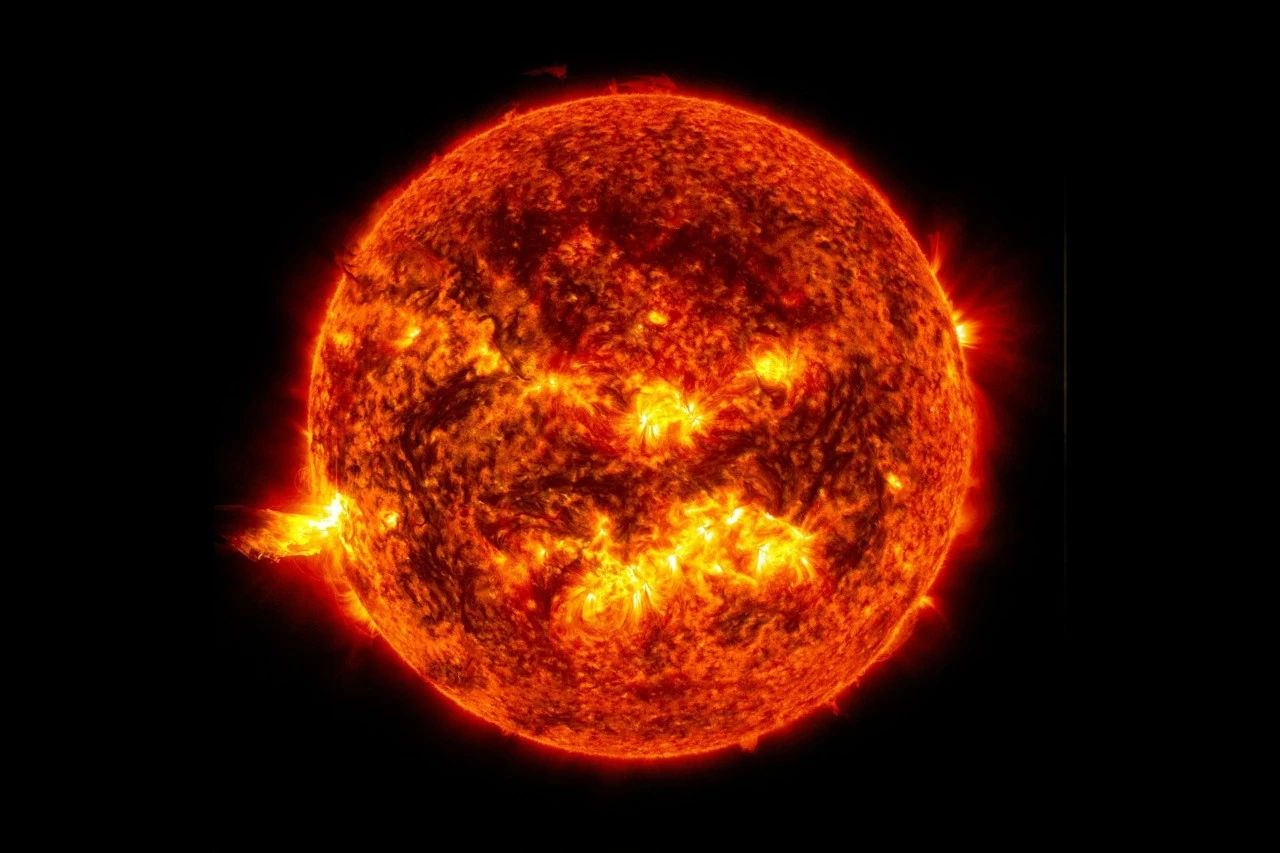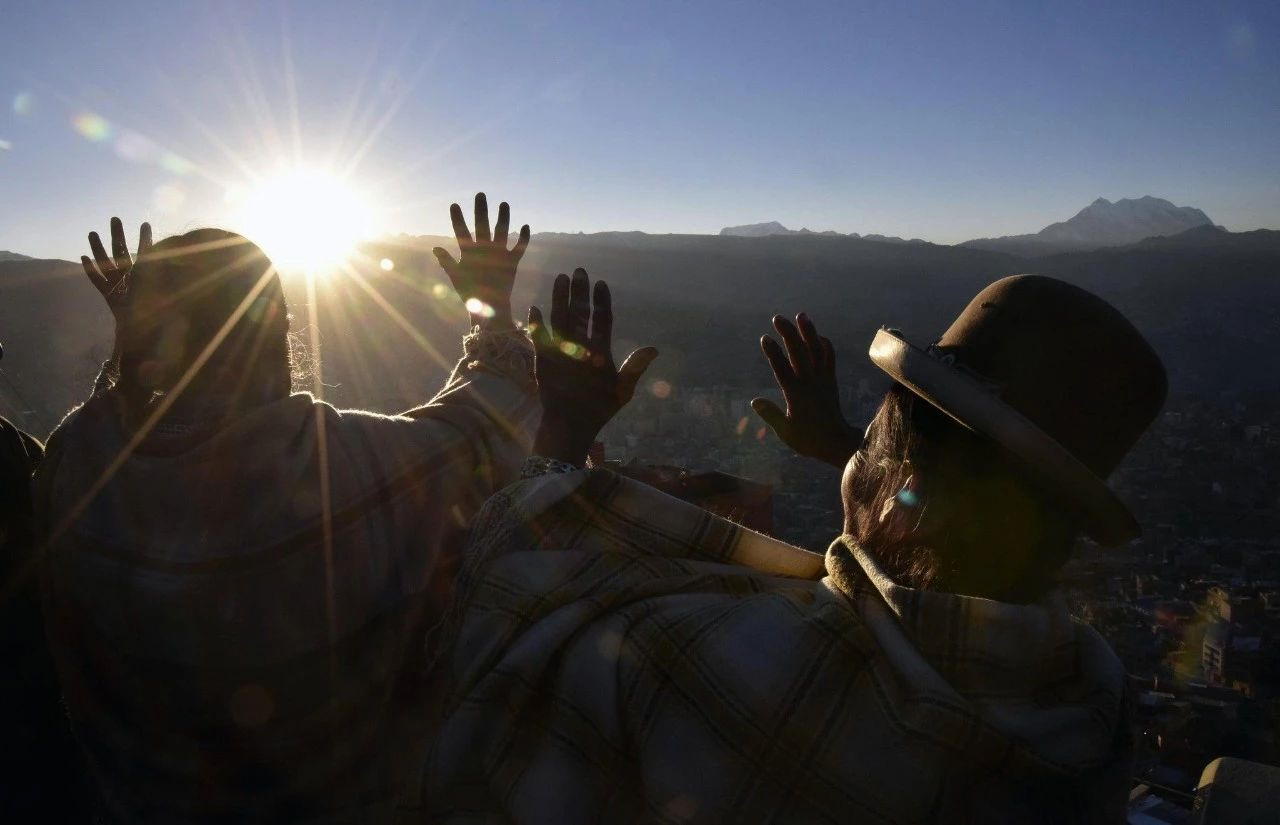导语 2018年7月7日,地球运行到“远日点”,这是一年中地球距离太阳最远的时刻。距离太阳远了,按理说应当凉爽起来,可是天气却越来越热,这是为什么?
关键词:科普、译文、远日点
During aphelion, our planet receives 7 percent less sunlight than in January, but changes in the planet's orbit are not what causes our seasons.
在远日点,我们的星球比1月份少了7%的阳光,但是地球轨道的变化并不是导致我们季节更迭的原因。

[Sweltering temperatures on the surface of Earth's northern hemisphere notwithstanding, the sun and Earth are currently three million miles farther from each other than when they're closest.Credit: NASA Goddard]
[尽管地球北半球地表温度很高,但太阳和地球之间的距离比距离最近的时候要远300万英里。图片来源:NASA Goddard]
On Friday, Earth will swing toward the outermost point in its orbit, known as aphelion. You, me and everyone on the planet will be three million miles farther from the sun than when we are closest to it.
星期五,地球将向被称为远日点的其轨道的最外点运动。你,我和这个星球上的每个人离太阳的距离都比距离最近的时候要远300万英里。
The change occurs because our planet's orbit is not perfectly circular. Instead, it is squashed into an ellipse with the sun offset from the center - an effect that causes Earth to orbit to its farthest point every July and its innermost point, or perihelion, every January (the exact dates vary slightly from year to year).
之所以会发生这种变化,是因为我们星球的轨道并不是完美的圆形。相反,它被压成一个椭圆形,太阳从中心偏移 - 这一效应导致地球每年7月绕轨道运行到它的最远点,每年1月运行到它的最内点或近日点(确切日期每年略有不同)。
So, while record-breaking temperatures and raging wildfires in the Northern Hemisphere might lead you to believe the sun is punishingly close right now, remember that it is just the opposite. In fact, the extra distance causes the amount of received sunlight to drop by 7 percent compared to January.
因此,尽管北半球创纪录的高温和猛烈的山火可能会让你相信现在的太阳离我们近在咫尺,但请记住,事实恰恰相反。事实上,与1月相比,增加的距离导致接收到的太阳光下降了7%。
But don't expect any relief from summer. Seasons on Earth are the product of changes in the amount of direct sunlight as the planet tilts toward and away from the sun - not its orbital path. It would take a much greater swing, so that the amount of received sunlight dropped significantly, in order to notice the difference.
但是不要指望夏季能有任何缓解。地球上的季节是当地球朝太阳倾斜和远离太阳倾斜时阳光直射量变化的产物-而不是它的轨道。它的摆动幅度要大得多,所以接收到的阳光的数量显著下降,从而引起了巨大的变化。
To consider what life would be like on a planet under these orbital circumstances, you only have to look as far as Mars, whose elliptical orbit causes the amount of received sunlight to vary by as much as 31 percent over the course of the planet's year.
要考虑在这种轨道环境下,行星上的生命是什么样子,你只需要看看火星,它的椭圆轨道导致接收到的太阳光量在一年中最多变化31%。
'I find it amusing that the common misconception about Earth's seasons is actually true if you are on Mars,' said David Grinspoon, an astrobiologist at the Planetary Science Institute. 'School children on Mars will need to be taught differently.'
'我觉得有趣的是,如果你在火星上,对地球季节的普遍误解实际上是正确的,'行星科学研究所的天体生物学家David Grinspoon说, '在火星上学的孩子需要接受不同的教育。'

[Aymara indigenous people celebrating the sunrise of the southern hemisphere's winter solstice this year, also the Aymara New Year, near La Paz, Bolivia. Credit:Aizar Raldes/Agence France-Presse - Getty Images]
[2018年,玻利维亚拉巴斯附近的艾马拉土著居民庆祝南半球冬至的日出,也是艾马拉新年。图片来源:Aizar Raldes / Agence France-Presse - Getty Images]
Just like Earth, Mars swings toward the frigid outer solar system at the peak of its Northern Hemisphere's summer and its Southern Hemisphere's winter. But because that swing is so much more dramatic, the plunge in sunlight creates a milder northern summer and a downright frigid southern winter. Later, Mars snuggles up close to the sun, leading to a milder northern winter and a simmering southern summer.
就像地球一样,火星在北半球夏季和南半球冬季时向寒冷的外太阳系移动。但由于这种变化的幅度要大得多,在阳光的照射下会产生一个温和的北半球夏季和一个完全寒冷的南半球冬季。随后,火星靠近太阳,导致了温暖的北半球冬季和闷热的南半球夏季。
'It's like toasting your marshmallow slowly from a safe distance above the campfire, then swooping in close for the nice quick char,' said Tanya Harrison, a planetary scientist at Arizona State University, referring to that southern summer.
亚利桑那州立大学的行星科学家Tanya Harrison在谈到火星南半球的夏天时说:'这就像是在篝火上方的安全距离慢慢地烤着你的棉花糖,然后在近距离俯冲,把糖烧焦。'
(责任编辑:周姚)

